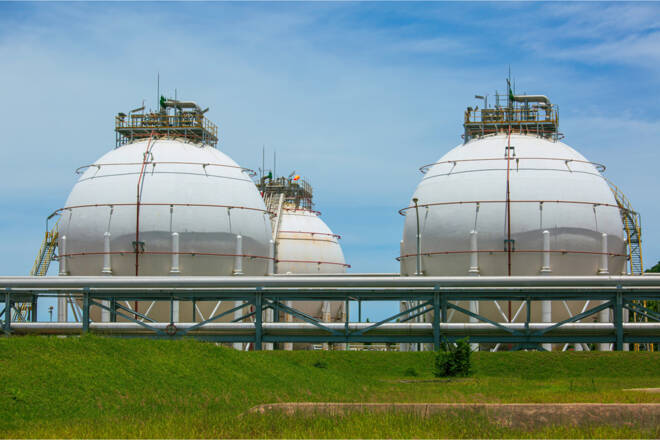Advertisement
Advertisement
Natural Gas Price Fundamental Daily Forecast – Underpinned by Threat of US Railway Strike
By:
A U.S. railway strike could threaten coal supplies to power plants, which could force generators to burn more gas to produce electricity.
Natural gas futures are edging higher for a fifth-straight session on Wednesday as a cluster of bullish factors continued to underpin the market although traders expressed caution about chasing the market higher.
At 01:19 GMT, October natural gas futures are trading $8.455, up $0.171 or +2.06%. On Tuesday, the United States Natural Gas Fund ETF (UNG) settled at $29.12, up $0.11 or +0.38%.
Among the factors supporting higher prices at this time are bullish near-term weather conditions, a decline in domestic production, worsening about European supply and worries about a possible U.S. railroad strike.
Meanwhile, bullish traders have been shrugging off potentially bearish news including recent record output, forecasts calling for lower demand next week than previously expected and the ongoing outage at the Freeport liquefied natural gas (LNG) export plant in Texas, which has left more gas in the United States for utilities to inject into stockpiles for next winter.
Short-Term Weather Outlook: EBW Sees Stronger Heat
EBW Analytics Group noted forecasts Tuesday showed stronger heat over the Midwest from Friday through next week (Sept. 16-22), potentially lifting highs into the 90s in Chicago, Natural Gas Intelligence (NGI) reported.
The added 5 Bcf of cooling demand over that period is “a notable counter-seasonal warming,” said EBW’s Rubin, senior analyst. Additionally, “with coal and nuclear units entering maintenance, it may result in an elevated call on gas-fired demand.”
Production Drops
Wood Mackenzie analysts said the firm’s production data Tuesday showed “a significant decline,” falling more than 2.0 Bcf/d to around 97 Bcf/d. Output earlier this month topped 100 Bcf/d – a 2022 high.
Meanwhile, data provider Refinitiv said average gas output in the U.S. Lower 48 states have risen to 93.1 Bcf/d so far in September from a record 98.0 bcfd in August.
European Supply Worries Add to Upward Pressure
Strong demand for U.S. liquefied natural gas (LNG) could continue into at least the end of the year due to Russia’s decision earlier this month to suspend natural gas deliveries to Europe via the Nord Stream 1 (NS1).
“The news that Russia was suspending gas flows through the Nord Stream 1 pipeline crystallized fears that have been building since the invasion of Ukraine on Feb. 24,” Wood Mackenzie analyst Ed Crooks said.
“Europe is now essentially at the mercy of the weather,” he added. “If the continent has a mild winter, then European gas supplies should be adequate,” thanks in large part to LNG. “In an extremely cold winter, demand curtailment will be inevitable.”
Short-Term Outlook
The wildcard that could drive prices sharply higher over the near-term is the possible U.S. railroad strike. If the strike takes place on Friday as planned then it could threaten coal supplies to power plants, which could force generators to burn more gas to produce electricity.
The White House made contingency plans seeking to ensure deliveries of critical goods in the event of a shutdown of the U.S. rail system while again pressing railroads and unions to reach a deal to avoid a work stoppage affecting freight and passenger service.
“Market players … fixated on the potential for U.S. coal supplies to be threatened amid a looming strike by the U.S. railroad union workers later this week,” analysts at energy consulting firm Gelber & Associates said, noting the market ignored several bearish factors.
For a look at all of today’s economic events, check out our economic calendar.
About the Author
James Hyerczykauthor
James Hyerczyk is a U.S. based seasoned technical analyst and educator with over 40 years of experience in market analysis and trading, specializing in chart patterns and price movement. He is the author of two books on technical analysis and has a background in both futures and stock markets.
Advertisement
